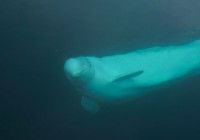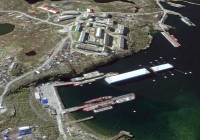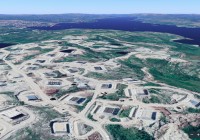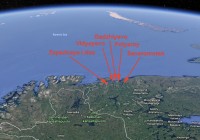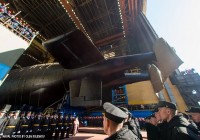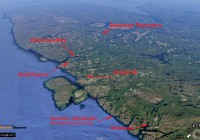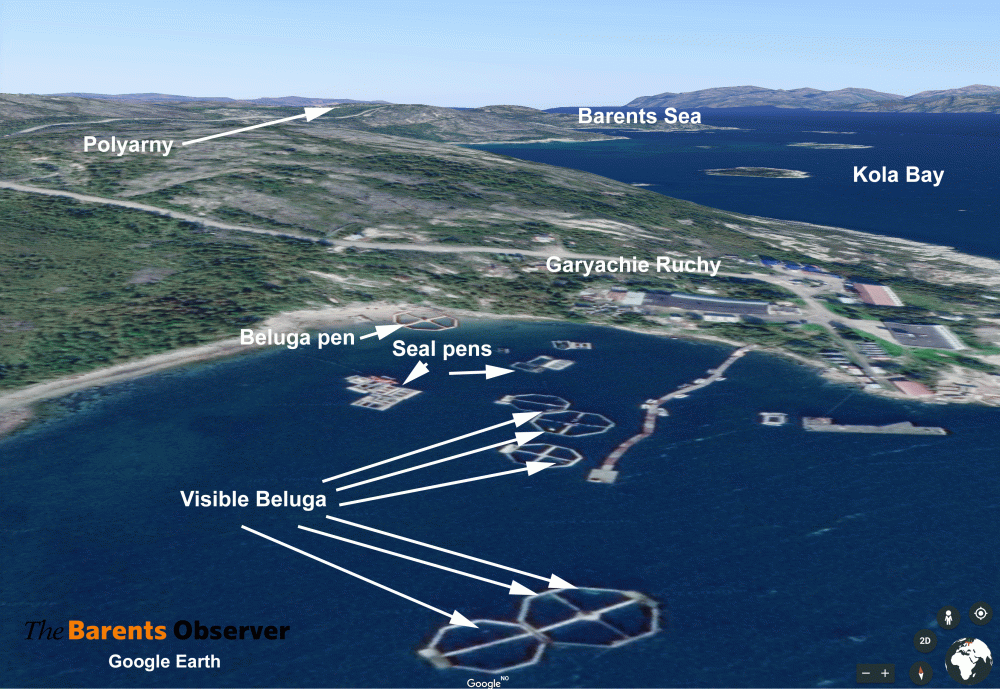
Satellite images reveal Russian navy's secret Arctic marine mammal facility
ADVERTISEMENT
The beluga whale wearing a harness with mounts for a GoPro camera that first was spotted by local fishermen on Norway’s Barents Sea coast in late April is still swimming around in the harbor of Hammerfest.
Making big headlines in Norway and around the globe, the locals name him ‘Whaledimir’ (Hvaldimir in Norwegian) after national broadcaster NRK made a poll asking their audience to name the animal. Today the beluga is stripped free from the harness, but is refusing to leave his new life of freedom in Norway. Experts say the whale will likely not survive without being fed by humans.
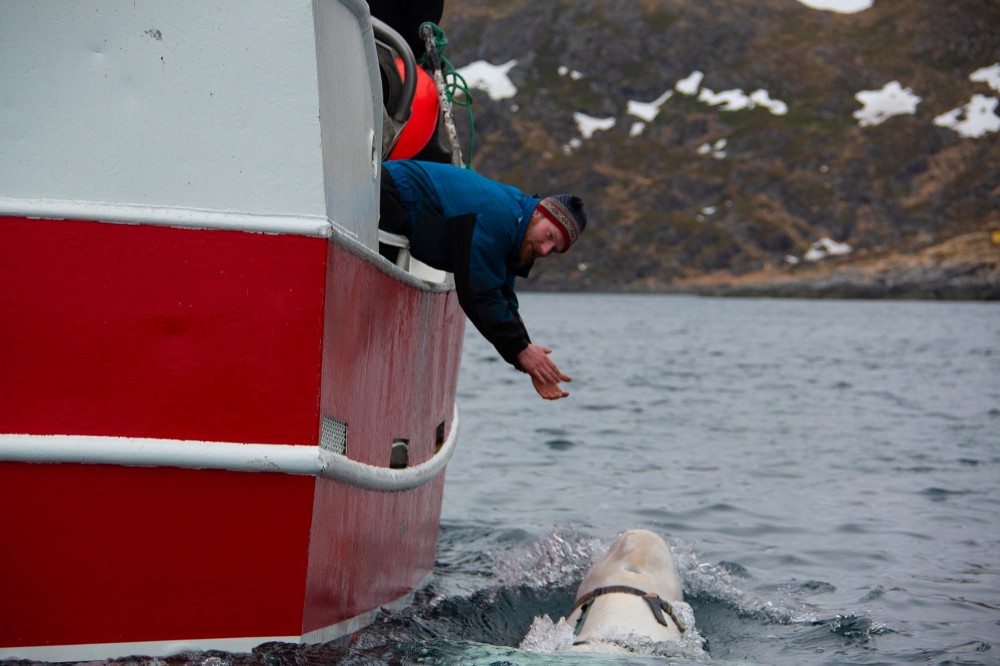
Obviously coming from Russia, even Norway’s Police Security Service (PST) started to look into the case, but has still not made any public conclusions about the whale’s origin and, maybe more interesting, which tasks the whale could have by swimming around in Norwegian waters. The equipment attached to the whale is now in PST’s possession.
In latin letters, the label on the gear reads ‘Equipment St. Petersburg’. There is in fact a shop in St. Petersburg importing from abroad and adjusting different kind of harness for sale.
ADVERTISEMENT
Maybe ‘Whaledimir’ was not at all on an alleged spy mission, but simply escaped from the pens from where he was trained?
This weekend, H I Sutton, a leading expert on Russia’s submarine fleet and known for publishing analysis based on Open Source Intelligence (OSINT) revealed a satellite image on the portal Covert Shores from April this year showing the appearances of two pens moored at a pier in Olenya Guba (Bay) on the Kola Peninsula. Inside one of the pens is what looks like a beluga whale swimming.
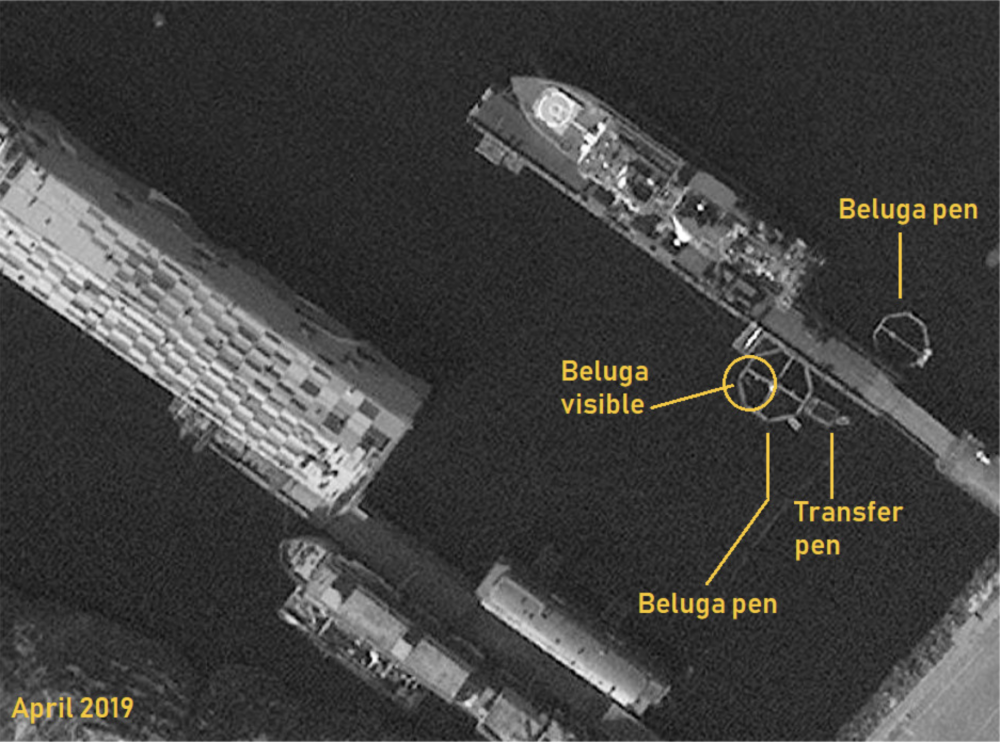
Olenya Bay is home to Russia’s secret special missions submarines, the 29th Special Submarine squadron, operated by the Main Directorate for Deep Sea Research, also nicknamed GUGI. Last year, the Barents Observer published a longer story about the base and the fleet of spy-submarines, including several small nuclear-powered subs that can sit still on the seafloor.
If ‘Whaledimir’ ever was trained for such spy-missions is not known, but the images by Covert Shores clearly link the Russian navy’s marine mammal program to operations of the top secret special purpose submarine unit in Olenya Bay. The vessel on the same pier as the pens is «Yantar» an intelligence vessel that can carry two small submarines, officially said to be used for «deep-sea research and rescue operation».
The two pens in Olenya Guba have recently been moved there. They were not visible on any satellite images from 2018 or 2017.
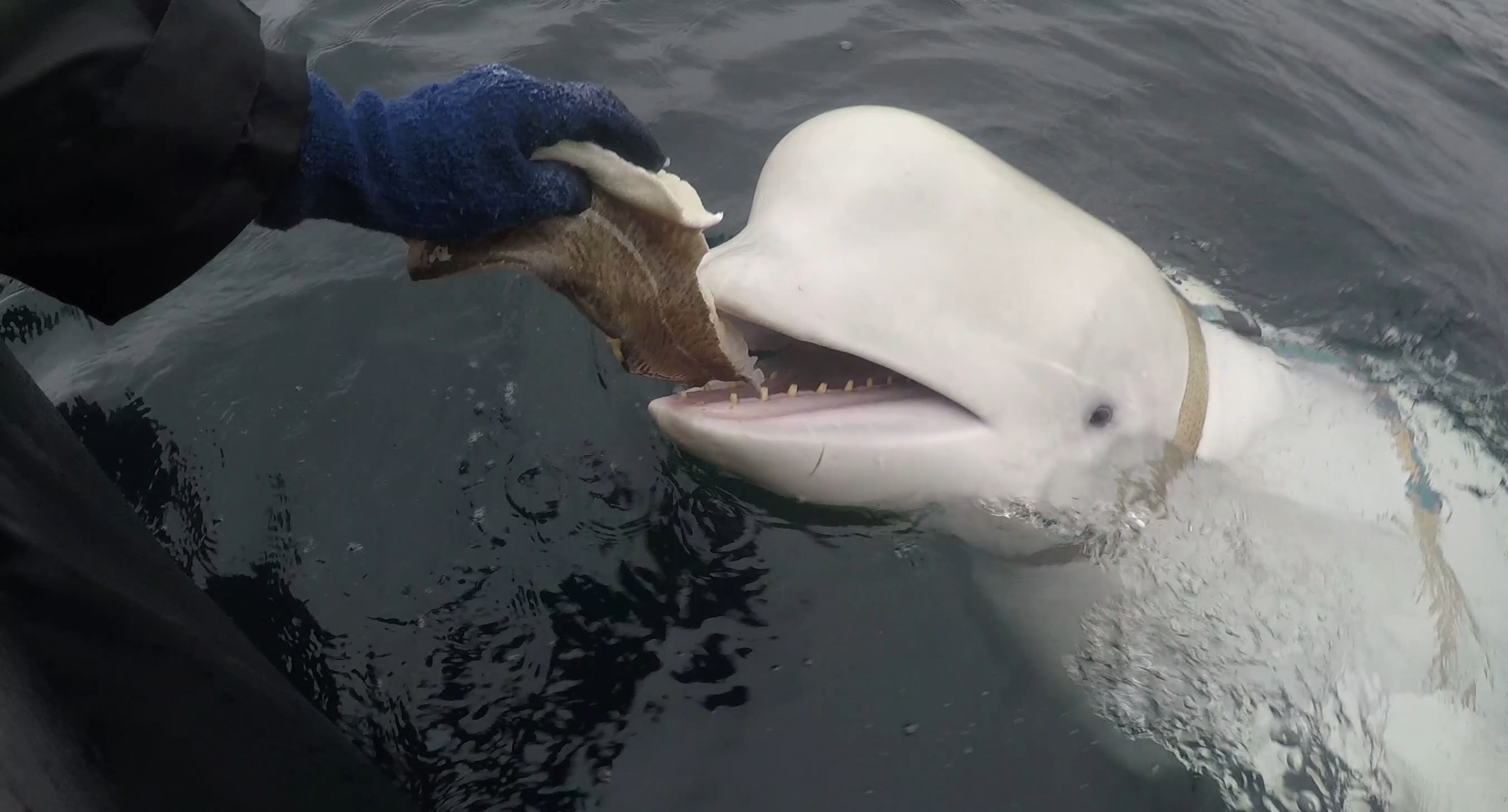
Spy mission?
A key question, yet unanswered, is: Was ‘Whaledimir’ really swimming all by himself to the western coast of Finnmark in Norway, or was he brought there on board a submarine or another kind of vessel before he decided to escape from his employer?
What kind of secret underwater installations do Norway have on the coast to the Barents- or Norwegian Seas in the area that could be of interest for Russia’s Main Directorate for Deep Sea Research?
If he was not brought to the area by the Russians, why would he then swim all the way from the Kola Peninsula to Rolvsøya north of Hammerfest before contacting humans? There are many more fishermen villages and settlements in between Russia’s border to Norway and Western Finnmark.
The story of ‘Whaledimir’ could certainly one day become a well written manuscript for a Hollywood movie.
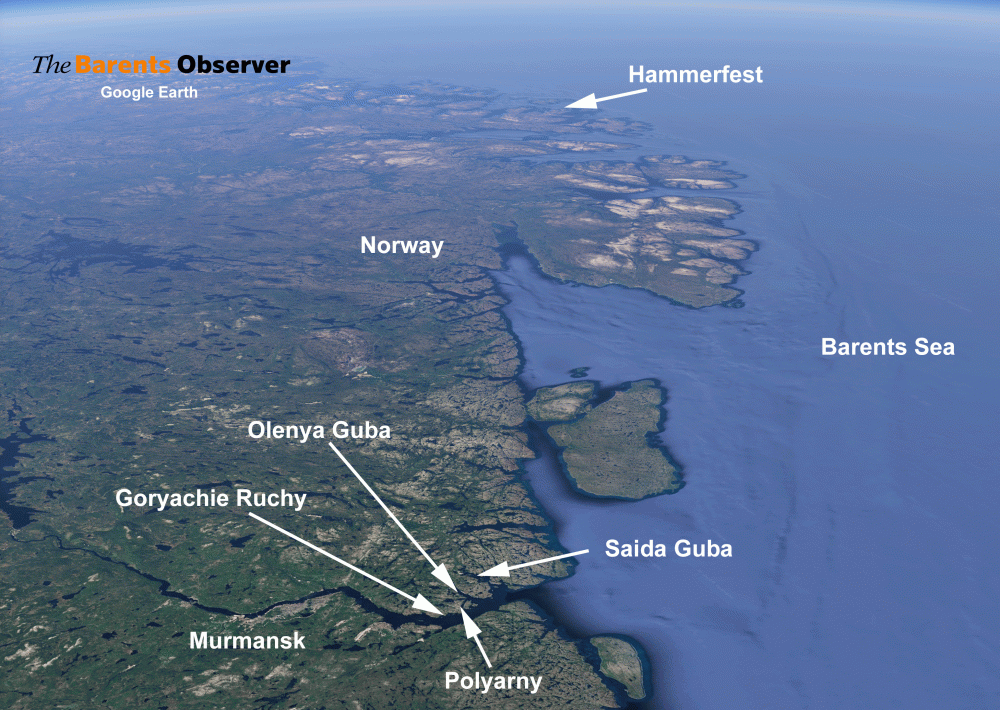
Beluga training facility in Polyarny
Visible on Google Earth’s satellite images here published by the Barents Observer (top photo) are six pens in the waters at Garyachie Ruchy, a small bay about 3,5 kilometers south of Polyarny in the Kola Bay north of Murmansk.
The pens in the bay, three with a diameter of 16 meters and two with a diameter of 20 meters, are protected from Arctic storms and waves by a headland. Onshore are two office buildings and one larger hall for equipment or other gear. A long pier with several zodiacs and small boats goes out in the water.
Most, interesting, though, are the belugas visible inside the pens. When zooming in on the satellite photo, six belugas are visible. Adult male belugas can range from 3,5 to 5,5 meters, while the females are from 3 to 4 meters. Given the diameter on the pens are 16 and 20 meters, the visible animals, white in color and of which mainly the head or front part of the body is clearly seen, can hardly be anything else then belugas.
A group of other smaller pens nearby could be for seals, also known to be trained by the navy for different purposes.
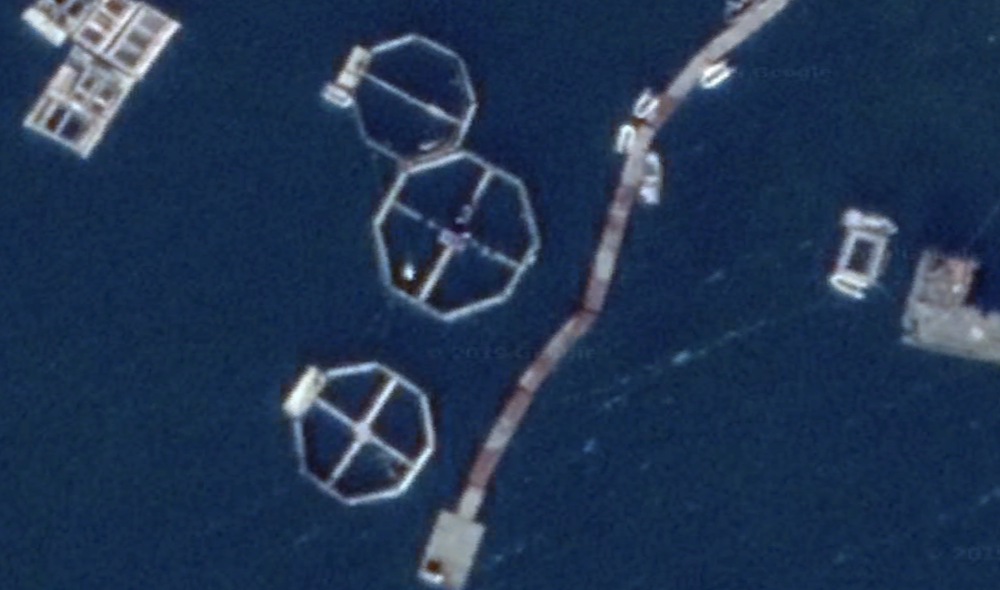
Another location previously reported about in Russian media is a small bay separated from the larger Saida bay by a tide-water stream. This locatation, north of Polyarny and Olenya bay, is marked on Wikimapia as “military dolphinarium of the Murmansk Marine Biological Institute” and the attached description says both seals and belugas were trained here for search- and rescue tasks as well as underwater technical works. The program was in cooperation with the navy.
One pen, with four pools, is visible on satellite image from the bay, but seems to be empty.
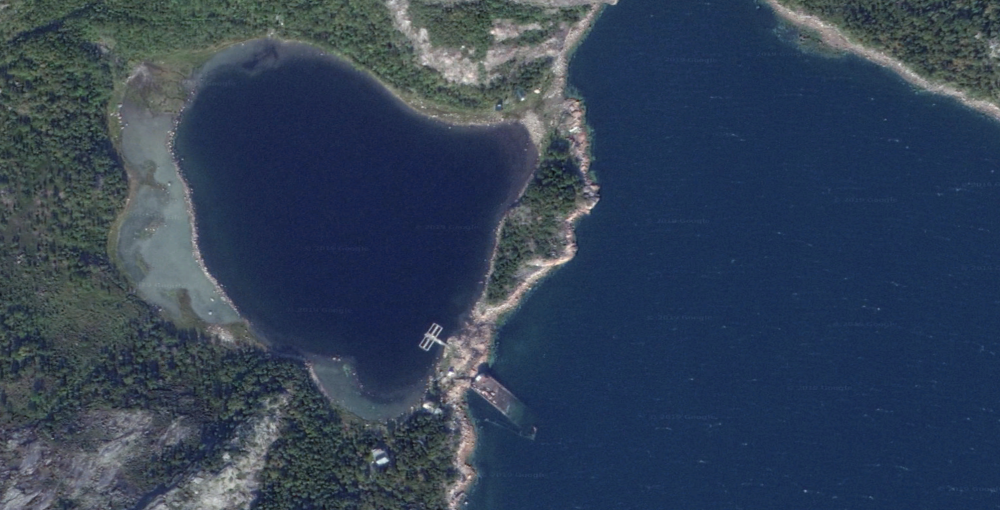
H I Sutton suggests that the two pens in Olenya bay were moved there at about the same time as ‘Whaledimir’ first turned up alongside a Norwegian fishing vessel in Finnmark in April. «The discovery demonstrates that the Russian navy is still working with marine mammals in the Arctic,» the analyse reads.
Reconnaissance missions
Interviewed by Fontanka, Director of Primorsky Center for Underwater Research in St. Petersburg, Yevgeny Polukhin, confirms that both dolphins and belugas can perform reconnaissance missions.
«Such a program has been going on since the times of the USSR, but did not pay off. These animals are very smart,» Polukhin explains and compare the whales with dogs. Polukhin elaborates that the navy’s training of whales was not very successful.
Yevgeny Polukhin says belugas are better to use up north than dolphins, since the Barents Sea and Arctic waters are more their natural habit, while dolphins were trained in the Black Sea.
Belugas are mainly seen in the high Arctic, waters around Svalbard, but are from time-to-time also spotted in the fjords on Norway’s Barents Sea coast. In the White Sea, south of the Kola Peninsula, belugas can be seen in huge groups around the Solovki archipelago where they meet for breeding in June and July.
In the Nilma Bay by the White Sea, 50 kilometers south of Kandalaksha, several belugas are kept in cages are trained. Visitors are invited to come see.
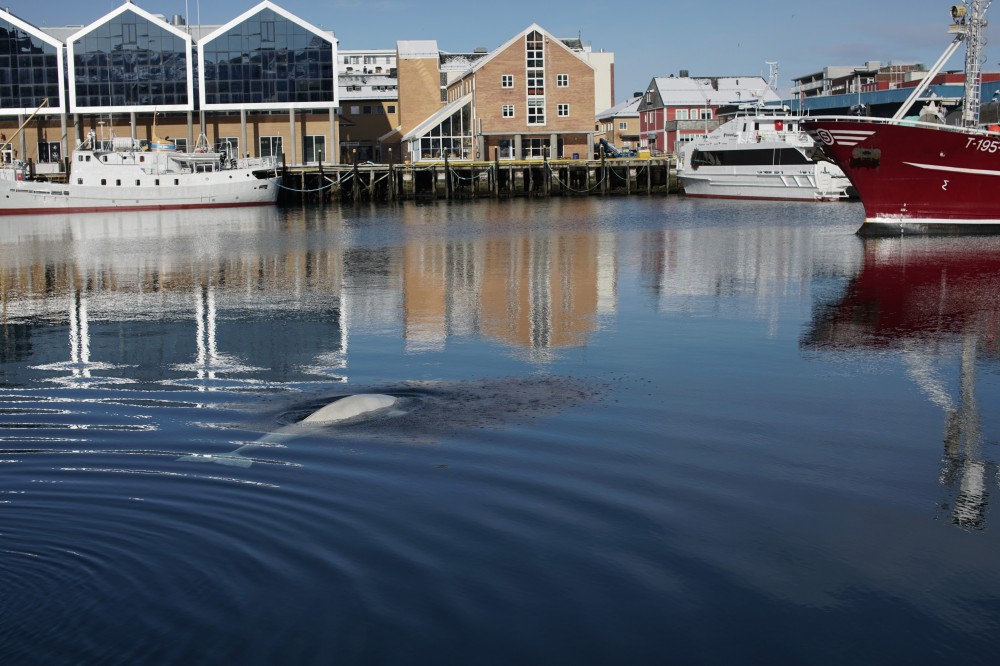
… We hope you liked this article.
Support independent, nonprofit journalism. For 17 years, the Barents Observer has provide serious, fact-based journalism and stories from the Barents region and the Arctic. Please help us continue to be a voice for freedom in the borderland to Russia. You can give a small support here.
ADVERTISEMENT
The Barents Observer Newsletter
After confirming you're a real person, you can write your email below and we include you to the subscription list.



